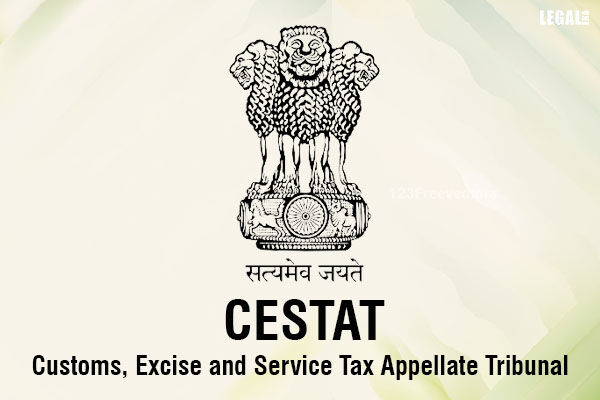
CESTAT Overturns Excise Duty Imposition on Micronutrient Fertilizers Based on Product Classification
Legal Ruling from CESTAT Clarifies Micronutrient-Based Products Are Fertilizers Not PGRs
The Kolkata Bench of the Customs, Excise, and Service Tax Appellate Tribunal recently issued a significant ruling regarding the classification of micronutrient-based products used to improve soil fertility. The tribunal concluded that these products should be classified as fertilizers and not as plant growth regulators. As a result, the excise duty demand and penalties previously imposed were overturned, providing clarity on the taxation of such agricultural goods.
Background of the Case
Total Agri Care Concern Pvt Ltd., an established manufacturer of agricultural products, found itself at the centre of this legal dispute. The company produces various agricultural items, including micronutrients, bio-fertilizers, and plant growth promoters. Among the products involved in the case were ACE, BLOOM F, and Totoroot, which the department initially classified as PGRs under Chapter 38 of the Central Excise Tariff. The department argued that these goods should have been subjected to excise duties, amounting to over Rs. 6 crores, along with penalties.
However, the appellant’s counsel contended that the products in question were, in fact, nutrient-based formulations designed to supplement essential trace elements such as zinc, boron, and iron in the soil. These micronutrient-based products, the counsel argued, did not alter or regulate plant physiology, an essential characteristic of plant growth regulators but instead promoted natural growth by correcting soil deficiencies.
Appellant’s Argument
The appellant’s counsel emphasized that the products were designed primarily to improve soil fertility by supplying nutrients that were deficient in the soil. The counsel pointed out that these products only support the natural growth process and do not interfere with plant physiology in a manner characteristic of PGRs. They also referenced earlier judgments such as Karnataka Agro Chemicals v. CCE and Northern Minerals Ltd. v. CCE, which made a distinction between fertilizers and plant growth regulators.
The core argument was that the products’ essential character is nutritional, and the market perception and dealer certificates affirmed their use as fertilizers. This, the counsel argued, should exempt the products from the excise duty typically levied on PGRs.
Revenue’s Argument
On the other hand, the revenue counsel argued that certain organic compounds and plant growth substances present in these products qualified them as PGRs under Chapter 38. They contended that the appellant had misclassified the goods to avoid excise duty. According to the revenue, the presence of growth-promoting substances in the products meant that they should fall under the classification for PGRs.
CESTAT’s Decision
The two-member bench, comprising Judicial Member, R. Muralidhar and Technical Member K. Anpazhakan, ruled in favour of the appellant, stating that the products were indeed fertilizers. The bench noted the following key points:
Primary Function: The tribunal observed that the primary function of the products is to supply nutrients to the soil to improve fertility and promote plant growth, which is characteristic of fertilizers.
Minimal Presence of Plant Growth Regulators: The tribunal emphasized that the mere presence of natural extracts or auxin-like compounds in negligible amounts does not alter the fundamental nature of these products. It further clarified that growth promoters merely aid in natural processes, whereas PGRs are intended to regulate or alter plant physiology.
Judicial Precedents: The tribunal referred to earlier judicial rulings that had established the distinction between fertilizers and PGRs. This precedent reinforced the view that products whose primary purpose is soil enrichment should be classified as fertilizers, even if they contain trace amounts of compounds commonly associated with growth regulation.
Market Perception: The tribunal also took into account market perception and dealer certificates, which supported the appellant’s claim that these products were sold and used as fertilizers, not PGRs.
In conclusion, the tribunal ruled that products like ACE, BLOOM F, and Totoroot were fertilizers and should be classified under Chapter 31 of the Central Excise Tariff, not under Chapter 38 as PGRs. Consequently, the excise duty demands and penalties imposed on Total Agri Care Concern Pvt Ltd. were set aside.
Implications of the Ruling
This ruling has important implications for both the agricultural industry and the tax authorities. By clarifying the classification of micronutrient-based products, it provides much-needed guidance on how such products should be treated for tax purposes. The decision strengthens the position that fertilizers, even if they contain some plant growth substances, should not be categorized as PGRs unless their primary function is to regulate plant growth.
For manufacturers of similar agricultural products, this ruling sets a precedent, ensuring that they are not unfairly taxed based on an incorrect classification. Additionally, it underscores the importance of market perception and product characteristics in determining the correct classification under the Central Excise Tariff.
The CESTAT’s ruling serves as a vital precedent in distinguishing between fertilizers and plant growth regulators. It reinforces the idea that products intended to supply nutrients to the soil, such as micronutrient-based fertilizers, should not be taxed as plant growth regulators unless they fundamentally alter plant physiology. This decision is a welcome development for agricultural manufacturers, providing clarity on product classification and the associated excise duty implications.